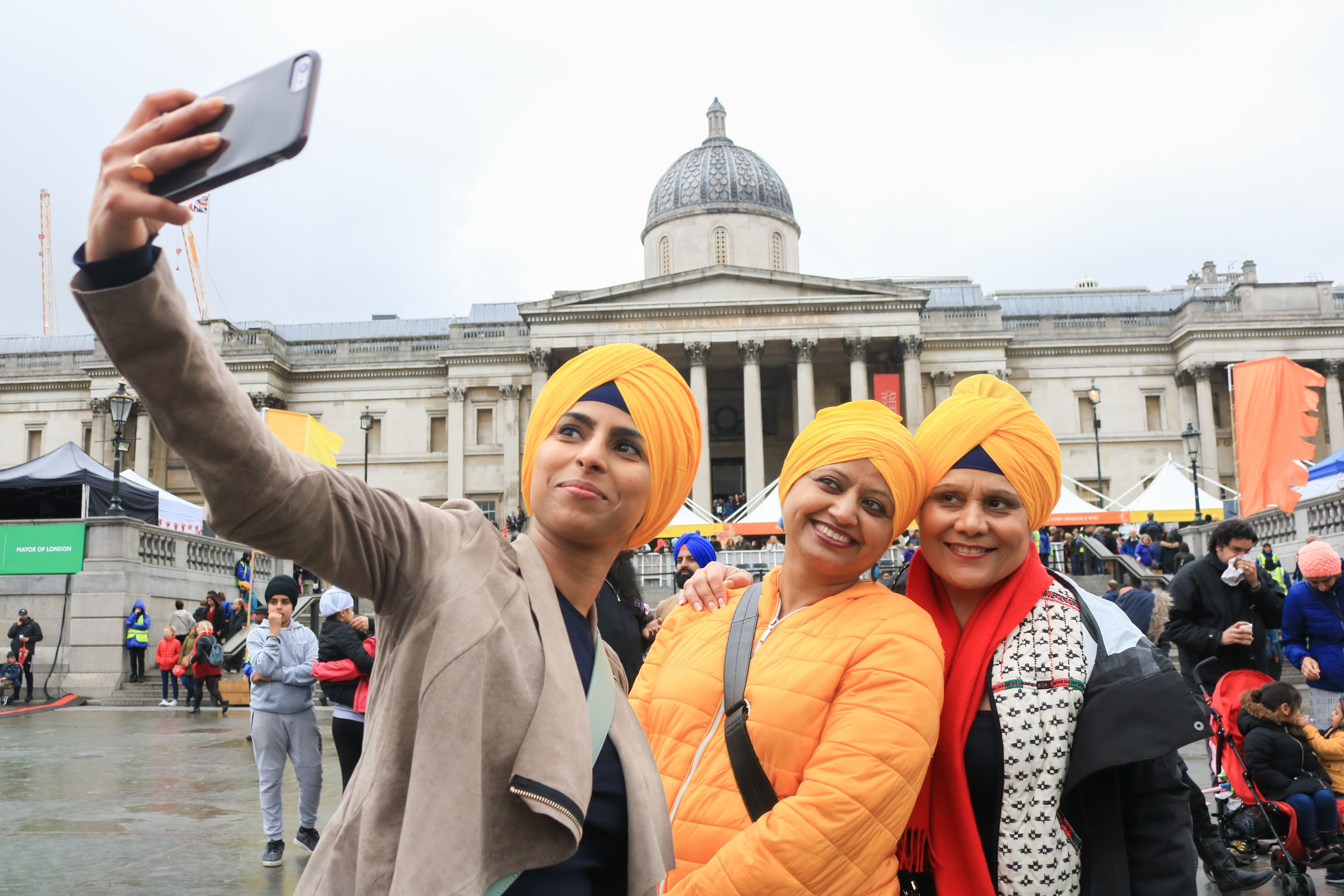Why Sikh women like me are embracing the power of the turban
I was 18 when I decided to fully commit to practising my faith and get initiated. My parents did not approve


On 14 April, Sikhs across Britain and the world celebrate Vaisakhi, an annual festival traditionally associated with harvest time for farmers. Vaisakhi is also a religious occasion, marking the birth of the Sikh Khalsa order, a way of life first laid down in 1699 that advocates for gender equality and social consciousness.
Sikhs will join street processions (nagar kirtan) across London, Birmingham, Manchester, as well as cities such as Toronto, New York and Los Angeles. And for an increasing number of Sikh women joining those processions, it will be the first time they wear a turban (dastaar).
As a Sikh woman, born and raised in England, I have been wearing my dastaar for 20 years, and it is truly a part of me and who I am. I was 18 when I decided to fully commit to practicing Sikhi, my faith, and get initiated as a Khalsa.
My parents did not approve. They said I was too young I should enjoy my life and not restrict myself like this. I was being told I would struggle finding a husband if I wear a dastaar, that I will get harassed more on the streets and that I will never get a good job because I will look too different, and society won’t accept that. None of that stopped me. I knew I had found my path and I was ready to walk it with commitment and discipline.
Becoming a Khalsa Sikh involves taking part in a short ceremony where you commit to following the principles laid down by the 11 Sikh Gurus and to wearing the Sikh articles of faith – the five Ks (the turban, sword, clean clothes, comb and steel bangle). These articles of faith are not just about identity, they are also about empowering the individual. They are about building a community and reminding the wearer every day of their duty to serve others.
I’m not alone in choosing this path either. Around 10-15 per cent of British Sikhs say they chose to be initiated as a Khalsa Sikh, according to the last British Sikh report. But Sikhs aged 19 or less were twice as likely to wear a dastaar as a Khalsa Sikh than those aged 19-65. Another report for the Home Office in 2019 claimed that young British Sikhs were becoming “more assertive about their faith identity while playing a bigger role in wider society.”
Sikh men have long known to wear dastaars, but it is less well known that Sikh women wear them too. I asked Simran Kaur, a successful accountant in London, about the reception she got after recently starting to wear one. “I know it may seem a difficult choice to some, but for me I want to be accepted for who I am and my Sikh identity to be celebrated because it helps me be a better person,” she told me.
To keep up to speed with all the latest opinions and comment sign up to our free weekly Voices Dispatches newsletter by clicking here
Amrit Kaur, another young woman who started wearing a dastaar at the age of 14, told me: “It helps me feel brave and that I am not a weak little girl because strong Sikh men and women wore the dastaar, and I feel like them when I wear it.”
For me, and most Sikh women, the dastaar is a potent symbol of power and strength, and raising our consciousness. It helps you become a better human being on the whole. I believe that in coming years we will see more and more British Sikh women wearing their dastaars with pride.
And when you see them on the street, the workplace or even public transport, be curious and be kind, and you may be surprised with what you learn about each other. Let’s not be afraid of our differences but rather use them to build bridges. That is the only way we can keep this land a truly United Kingdom.

Join our commenting forum
Join thought-provoking conversations, follow other Independent readers and see their replies